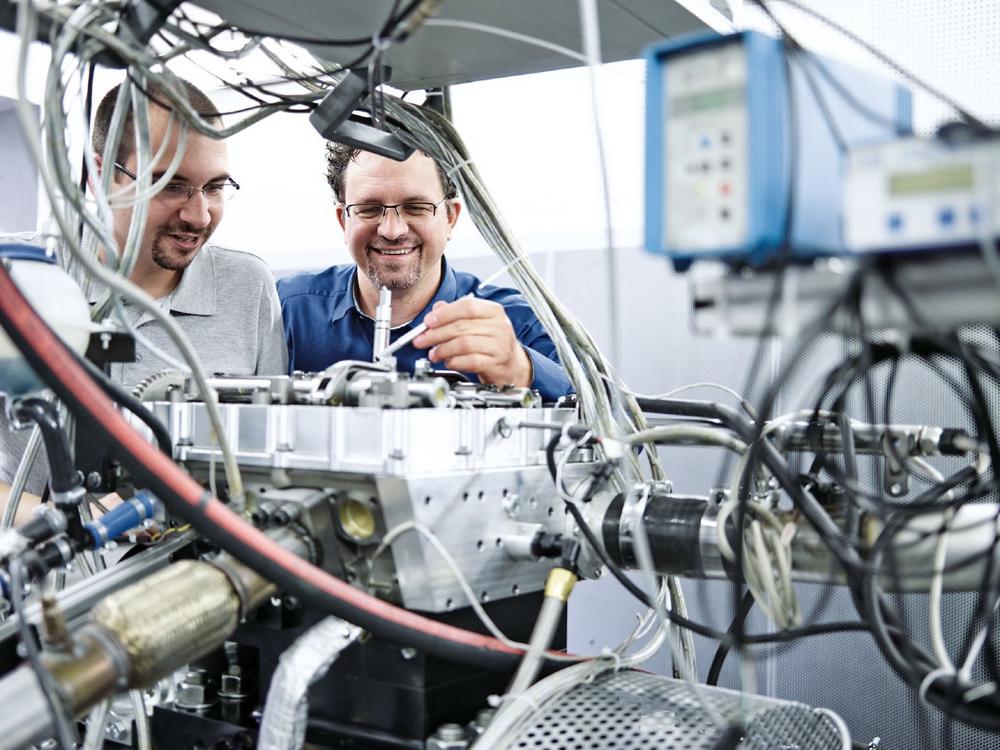Liteks-4, a lightweight piston developed for gasoline engines, is now ready for series production. For high-performance applications the piston can be supplied with ring carrier and cooling gallery. Test bench measurements followed by vehicle simulations have shown a CO2 reduction in the region of 1.7 percent on NEDC cycle.
Since the market launch back in 2006, more than 100 million Liteks pistons have been installed and contributing towards environmental protection in vehicles around the globe. Right now, the newest generation, the Liteks-4, is ready for series production, having been tested by the most modern methods for function and robustness. Besides low weight, the emphasis on this generation has been focused on ambitious targets for friction losses.
For the same engineload condition, the newest piston concept allows some ten percent reduction in piston weight compared with the predecessor generation. This is true both of budget engines and highly charged direct-injection models, where the ring carrier and cooling gallery help cope with the severe thermal and mechanicalconditions. This weight loss has chiefly been made possible by the rigorous enhancement of specific features. The curved piston pin boss front surface allows a smooth transition to the piston side wall and, in conjunction with the two ribs in each of the ring zone undercuts, minimizes stress at the combustion side of the crown. The well-known material benefits of the high-temperature resistant KS309 alloy have also been fully exploited to allow wall thicknesses to be minimized.
Improved friction performance
The basis for this improved friction behavior on the fourth Liteks generation is the optimized basic structure of the piston and the further enhanced piston profile shape. On the new design, piston skirt widths have again been reduced thrust and anti-thrust sides. Piston profile is asymmetrically barrel shaped. On the thrust and anti-thrust sides, differing ovalities are used, these being variable through the skirt length. While taking into account the thermal deformation of the piston and the working surface of the cylinder, this variability permits low-friction, low-noise definition of the piston’s external contour.
To reduce the mixed-friction effects in cylinder liner contact, KS Kolbenschmidt’s Nanofriks piston skirt coating is applied. This consists of a combination of nanoparticles, binders, solid lubricants, and additives. Tribometrical research has shown that this composition, when compared to conventional series coatings, will reduce the dry coefficient of friction as well as the amount of wear by more than one-half. Nanofriks thus fulfils present requirements regarding reduced fuel consumption and high operational reliability.
Diamond-like carbon for low-friction piston rings
Besides low-friction pistons, smooth, wire-sprayed liner surfaces are used in series production with a view to complying with the latest CO2 legislation. Combined with piston rings with a hard surface coating, such as diamond-like carbon (DLC), this facilitates a significant friction reduction across the engine map. These low-friction piston rings have been developed together with alliance partner Riken. Altogether, for the same low oil consumption, the optimized piston assemblies show around 25 percent less friction than current series-produced assemblies.
High-scoring test bench results
With a view to achieving with the Liteks-4 generation the defined friction targets on the complete piston assembly, elasto-hydrodynamic multi-body simulation tests were carried out right at the start of the development phase. The first prototypes were then examined on Kolbenschmidt’s own floating-liner engine and the measurements confirmed the simulated results. Under full-load conditions friction dropped by up to 28 percent and under part-load by seven percent.
For more validation, it was necessary to demonstrate the fuel consumption benefits on a complete engine. For this purpose a modern, already friction-optimized 3-cylinder engine was converted to Liteks-4 piston concept with low-friction piston ring package. For the standard version and the optimized piston assembly all the consumption figures were measured at the necessary operating points so that, afterwards, a NEDC simulation could be carried out. The result was a CO2 saving of 1.7 percent on a Class C vehicle during a NEDC.
Background information:
It was back in 2015 that KS Kolbenschmidt and Japan’s Riken Corporation, leaders in piston and piston ring technology, respectively, agreed on global strategic cooperation in the marketing and development of piston assemblies. The aim is to fulfil the tighter emission requirements and contribute towards low fleet consumption figures. Since then, piston assemblies have been jointly developed and have already successfully entered into series production for several OEMs.
Rheinmetall Automotive AG
Karl-Schmidt-Straße 2-8
74172 Neckarsulm
Telefon: +49 (7132) 33-3140
Telefax: +49 (7132) 33-3150
http://www.rheinmetall-automotive.com
Pressereferentin
Telefon: +49 (7132) 33-3142
Fax: +49 (7132) 3352140
E-Mail: Manuela.Schall@de.kspg.com
